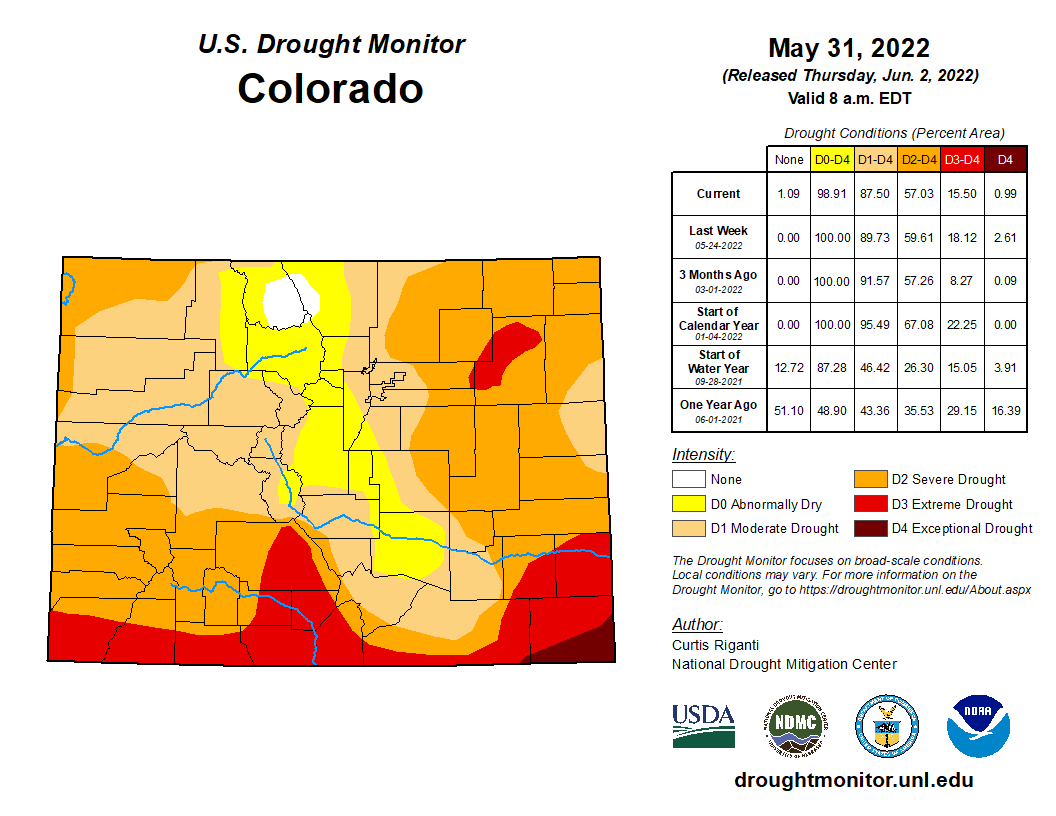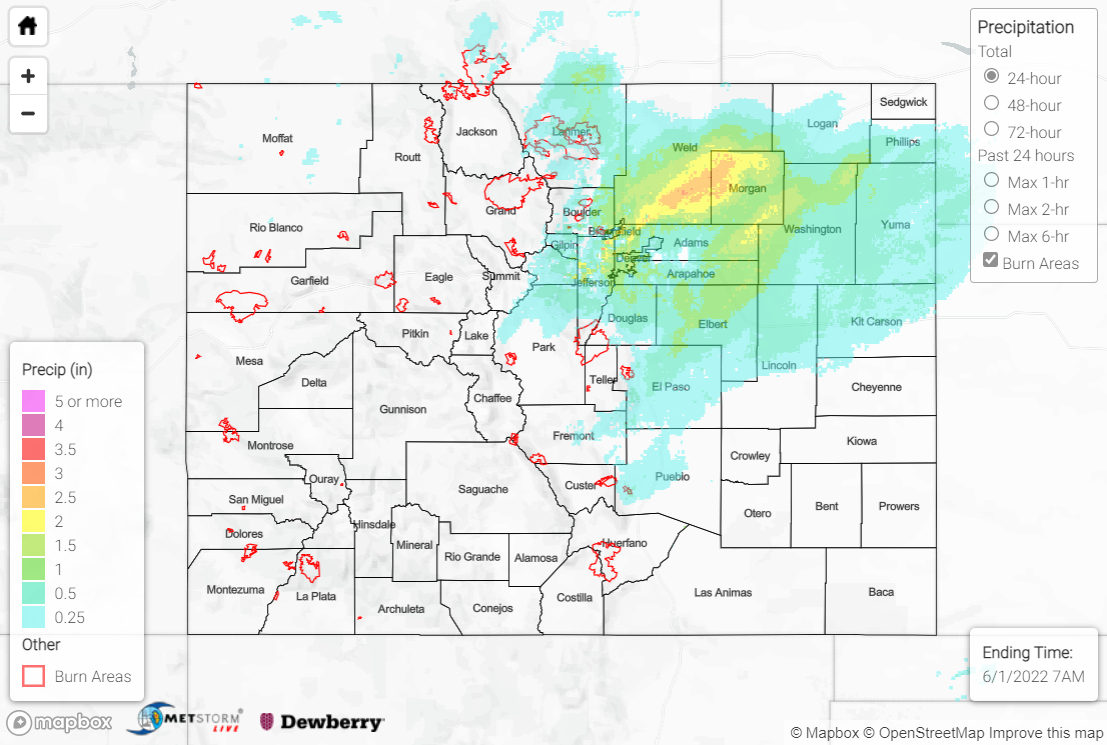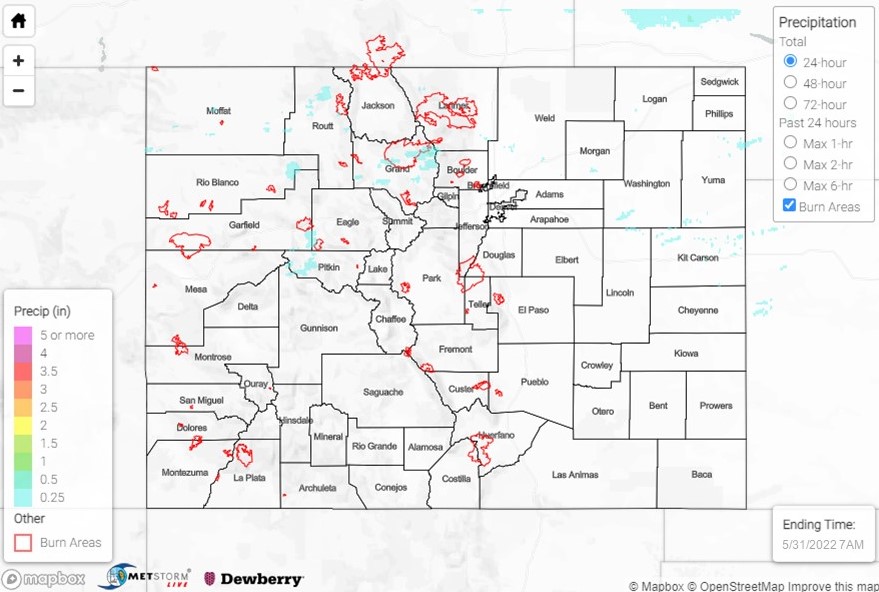Issue Date: Friday, June 3rd, 2022
Issue Time: 10:00 AM MDT
Summary:
Thursday featured relatively quiescent conditions as sunshine returned for portions of the state. A few showers and storms developed across the southern I-25 corridor in the late afternoon, producing up to 0.10” of precipitation across the Southeast Mountains, Raton Ridge, and southern Southeast Plains. The rest of Colorado remained dry with warming temperatures.
A few small wildfires continue burning west of the Divide, with critical fire weather anticipated today and into the weekend.
There was no flooding reported yesterday. For precipitation estimates in your area over the last few days, check out the map below.




